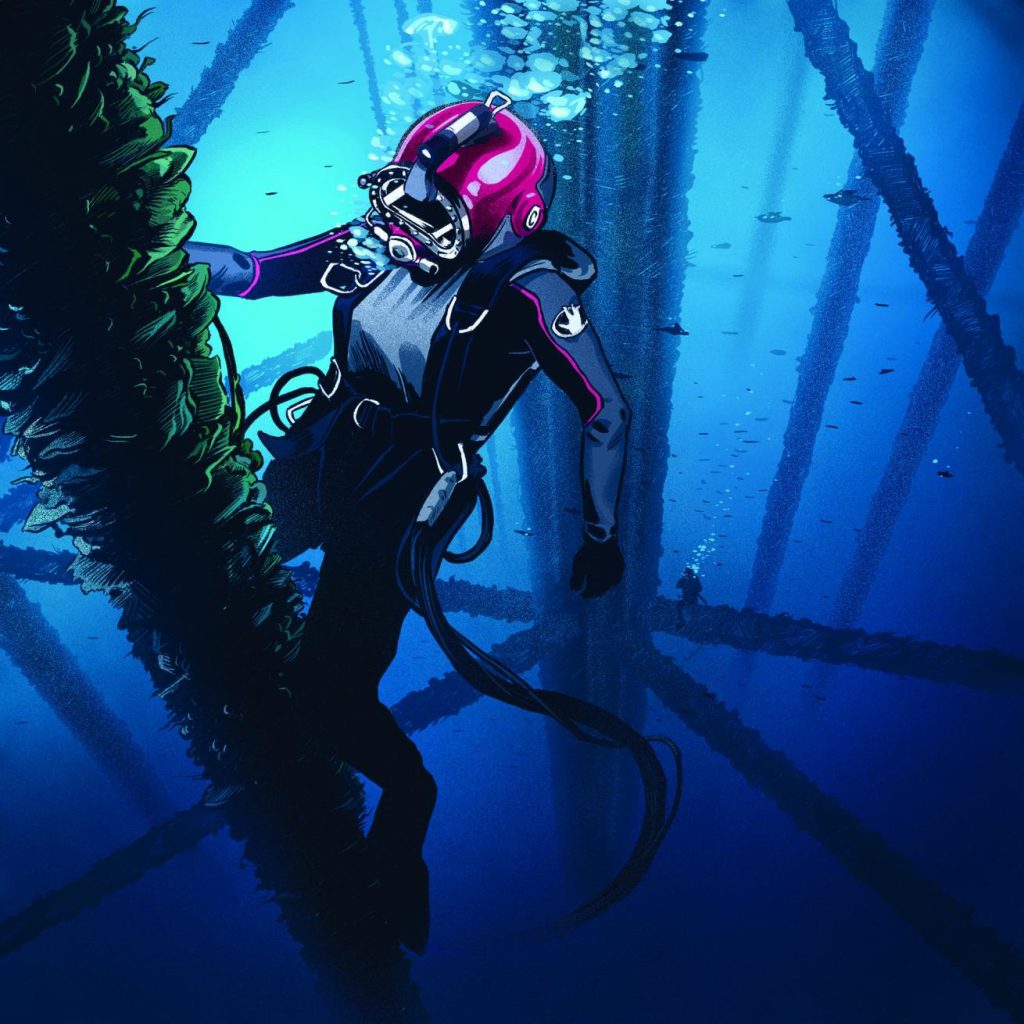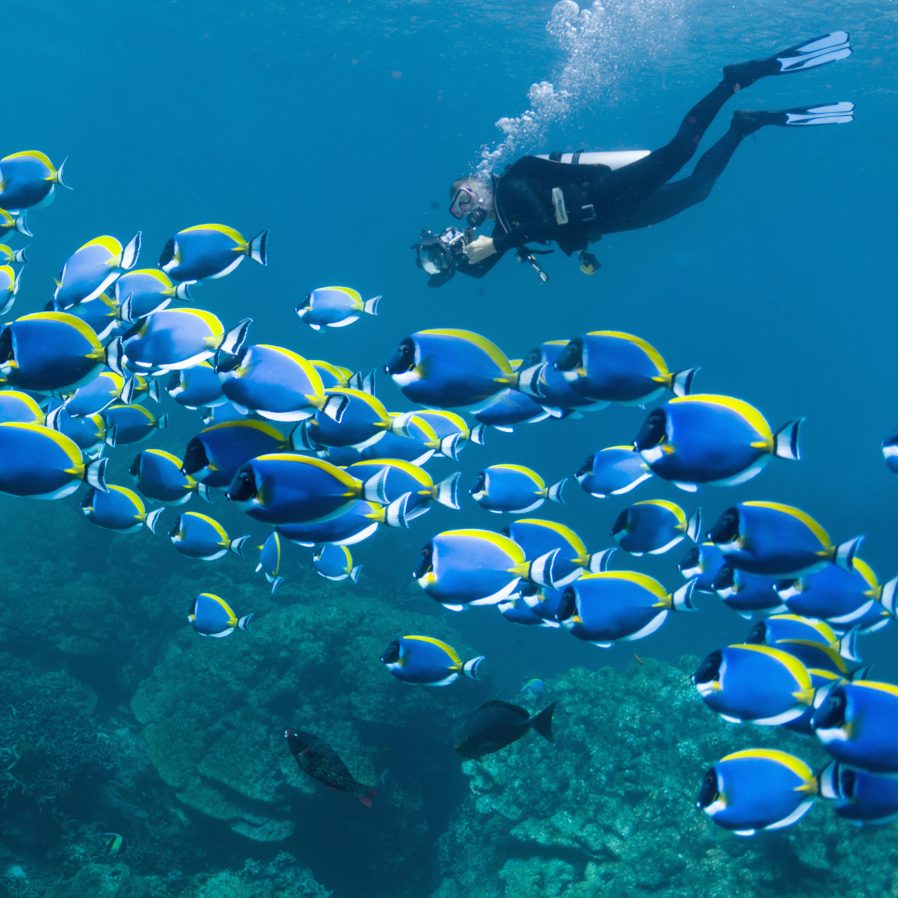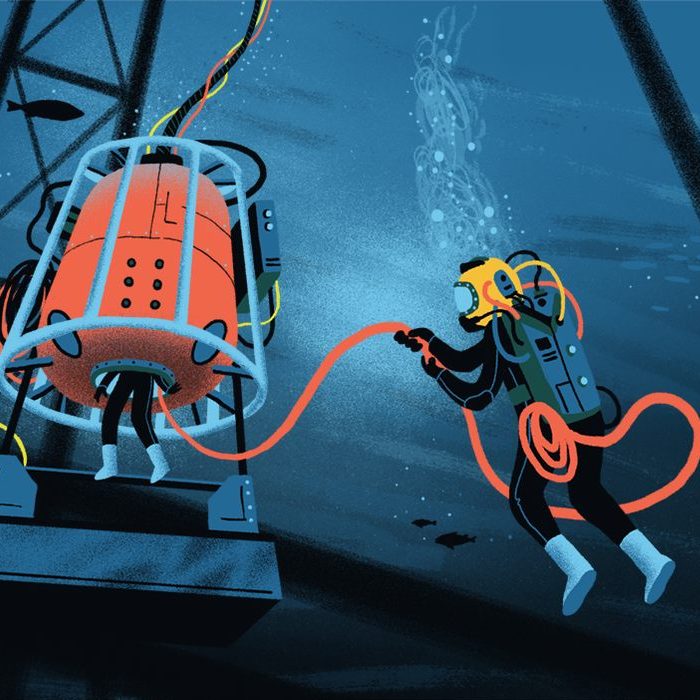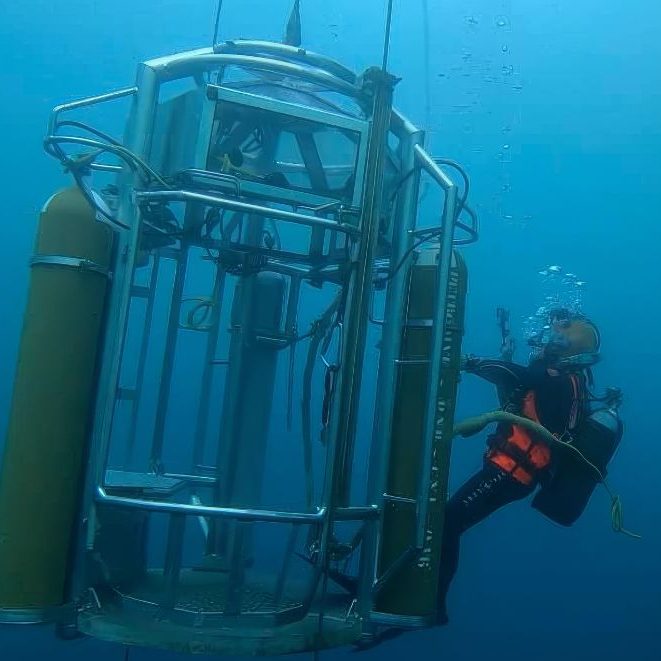Saturation diving is a specialized form of diving that allows divers to work at great depths for extended periods. It is a complex and demanding profession that requires rigorous training, advanced equipment, and a deep understanding of underwater physics. This comprehensive guide explores what saturation diving is, the benefits and risks involved, the required training and certification, equipment used, the daily life of a saturation diver, and its applications in various industries.
What is Saturation Diving?
The Concept of Saturation
Saturation diving is based on the principle that after a certain amount of time underwater, a diver’s body’s tissues absorb as much inert gas (usually helium) as they can hold. This state of “saturation” means that no matter how much longer the diver stays underwater, they won’t absorb any more gas. As a result, the decompression time required to safely return to the surface remains constant, regardless of how long the diver has been working at depth. This allows divers to stay underwater for extended periods, typically living in a pressurized environment and conducting multiple dives over days or weeks.
Historical Background
The history of diving dates back to the mid-20th century, with significant advancements made during the 1960s and 1970s. Projects like the U.S. Navy’s SEALAB program and commercial ventures in the North Sea oil fields were pivotal in developing the technology and techniques used in saturation diving today. The early pioneers faced numerous challenges and dangers, but their efforts led to the establishment of protocols and equipment that have made saturation diving a viable and essential practice in various industries. The evolution of saturation diving has expanded its applications, making it a crucial component of underwater exploration and construction.

Benefits and Risks
Advantages
One of the primary advantages of diving is the ability to conduct prolonged underwater operations without the need for repeated decompression. This efficiency is critical in industries like offshore oil and gas, where divers perform maintenance, repairs, and installations on underwater structures at great depths. Saturation diving also allows for complex scientific research in deep-sea environments, contributing to our understanding of marine biology, geology, and oceanography. The extended bottom time provided by saturation diving increases productivity and reduces the risks associated with repetitive decompression, making it a valuable technique for various underwater tasks.
Risks and Challenges
Despite its advantages, diving carries significant risks. The most immediate danger is decompression sickness, also known as “the bends,” which occurs if a diver ascends too quickly and nitrogen bubbles form in the bloodstream. Other hazards include oxygen toxicity, hypothermia, and equipment failure. The pressurized environment can also have psychological effects, such as claustrophobia and anxiety. Additionally, the long duration of saturation diving missions means divers are isolated from their families and daily life for extended periods. These challenges require rigorous training and a thorough understanding of safety protocols to mitigate the risks involved in saturation diving.
Required Training and Certification
Initial Training
To become a saturation diver, one must first complete basic scuba diving certification and accumulate significant experience in commercial diving. This initial training includes learning diving techniques, underwater welding, rigging, and the use of various diving equipment. Candidates must also pass physical and psychological evaluations to ensure they can handle the demands of saturation diving. These foundational skills and experiences are crucial for preparing divers for the more advanced training required for saturation diving. The initial training period helps build the competence and confidence needed to progress to diving programs.
Specialized Saturation Diving Courses
After gaining experience in commercial diving, candidates can enroll in specialized saturation diving courses. These programs cover advanced topics, such as gas mixing, decompression theory, and the operation of diving bells and pressurized habitats. Trainees also undergo simulated dives in hyperbaric chambers to experience the conditions they will face underwater. The curriculum includes both theoretical knowledge and practical skills, ensuring that divers are well-prepared for the unique challenges of saturation diving. Successful completion of these courses is mandatory for obtaining certification in saturation diving, which is essential for pursuing professional opportunities in this field.

Equipment Used in Saturation Diving
Diving Bells and Habitats
Diving bells and pressurized habitats are essential components of diving. The diving bell transports divers from the surface to the work site and back, maintaining the same pressure as the underwater environment. Pressurized habitats, also known as saturation systems or “habitats,” are living quarters where divers stay during their mission. These habitats are equipped with life support systems, including gas management, temperature control, and waste disposal. The diving bell and habitat are interconnected, allowing divers to move between them without changing pressure. This setup enables divers to live and work at depth for extended periods while ensuring their safety and comfort.
Life Support and Safety Equipment
Life support systems in saturation diving are critical for maintaining the health and safety of divers. These systems include gas supply units that provide a mixture of helium and oxygen, also known as “heliox,” to prevent nitrogen narcosis. Divers also wear specialized suits and helmets equipped with communication devices, temperature control, and emergency gas supplies. Safety equipment, such as rescue harnesses, decompression computers, and emergency medical kits, is also essential. Regular maintenance and strict adherence to safety protocols are vital for ensuring the reliability and functionality of life support systems and equipment during saturation diving operations.
Daily Life of a Saturation Diver
Living in Pressurized Environments
The daily life of a diver involves living in a confined, pressurized environment for weeks at a time. Divers reside in saturation habitats, which are connected to the diving bell. These habitats are equipped with basic amenities, such as sleeping quarters, a kitchen, and a bathroom. The pressurized environment is kept at the same pressure as the work site, allowing divers to decompress only once at the end of their mission. The confined space and isolation can be challenging, but divers maintain communication with the surface team and their families through secure communication systems. Adapting to life in a pressurized habitat requires mental resilience and a strong sense of teamwork.
Work Schedule and Tasks
Saturation divers typically follow a strict work schedule, with shifts lasting several hours. Their tasks vary depending on the mission and can include inspections, repairs, welding, cutting, and data collection. Once their shift is over, divers return to the habitat to rest, eat, and sleep. The routine is repetitive, but the structured schedule helps maintain a sense of normalcy. Divers also engage in recreational activities, such as reading, watching movies, and exercising, to pass the time. The demanding work schedule and challenging tasks require physical fitness, technical skills, and the ability to stay focused under pressure.

Applications in Various Industries
Offshore Oil and Gas
Saturation diving is most commonly associated with the offshore oil and gas industry. Divers perform tasks such as pipeline inspection, maintenance, repairs, and underwater construction. The ability to work at great depths for extended periods is invaluable for maintaining the integrity and functionality of underwater infrastructure. Saturation diving ensures that operations continue smoothly, minimizing downtime and preventing costly disruptions. The industry’s reliance on saturation diving underscores the technique’s importance in ensuring the safety and efficiency of offshore oil and gas extraction and transportation.
Scientific Research and Exploration
Saturation diving as water sports also plays a vital role in scientific research and underwater exploration. Marine biologists, geologists, and archaeologists use this technique to study underwater ecosystems, geological formations, and historical shipwrecks. The extended bottom time provided by saturation diving allows researchers to conduct detailed observations and collect samples that would be difficult to obtain during shorter dives. This research contributes to our understanding of marine life, oceanography, and human history. The scientific community’s use of saturation diving highlights its value in advancing knowledge and fostering discoveries in the underwater realm.
Saturation diving is a fascinating and challenging profession that enables divers to work at great depths for extended periods. By understanding the principles, benefits, and risks, as well as the required training and equipment, one can appreciate the complexity and importance of this field. Saturation diving has applications in various industries, from offshore oil and gas to scientific research, making it a crucial component of underwater operations. For those who pursue this demanding career, the rewards include not only financial compensation but also the opportunity to explore and work in some of the most extreme environments on Earth.
